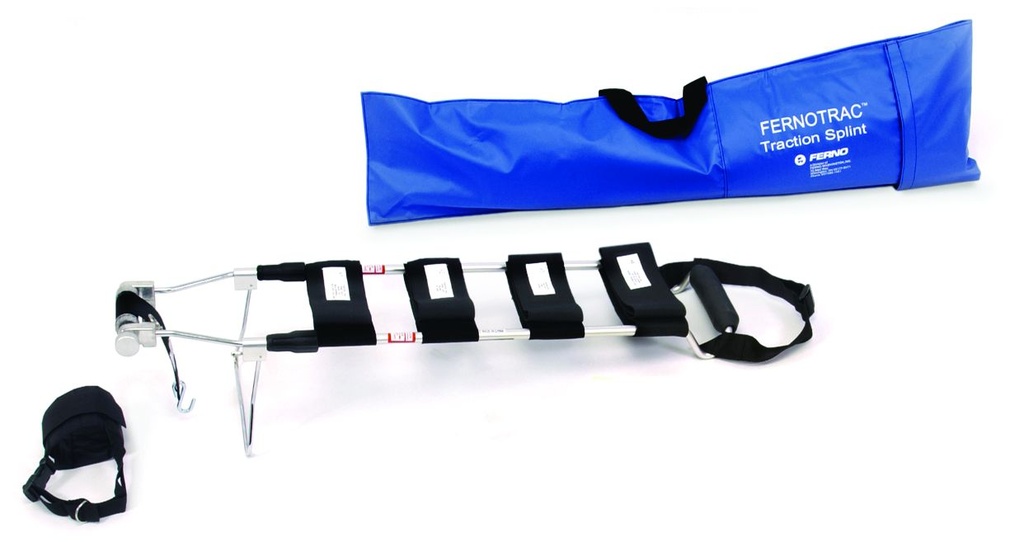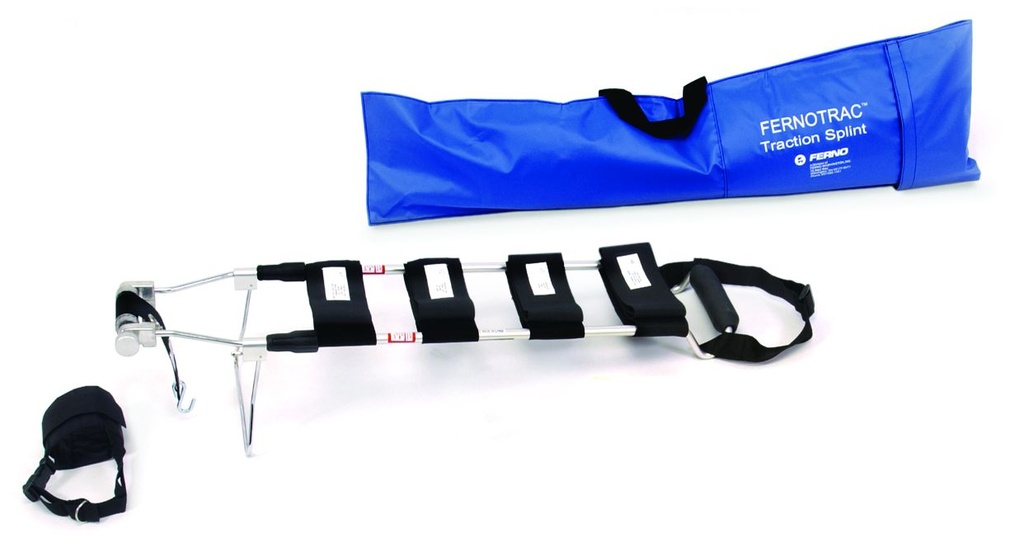TRACTION SPLINT, adult, extension 89-137cm (Ferno-444)
Valid Article
TRACTION SPLINT, adult (Ferno-444)
Definition
A traction splint is a splinting device that uses straps attaching over the pelvis or hip as an anchor, a metal rod(s) to mimic normal bone stability and limb length, and a mechanical device to apply traction (used in an attempt to reduce pain, realign the limb, and minimize vascular and neurological complication) to the inferior limb consequently to a femur fracture. It allows the transfer of the patient in optimal conditions to the health structure for treatment.
Specifications
The basic principle is that one end of the traction splint is positioned against the hip, and pushes upward against the pelvic bone. A strap around the foot and ankle is connected to the other end of the splint, and tightened to counteract the muscle tension and produce traction. Only then are additional straps added to aid immobilization of the limb.
Technical specifications
Ferno adult splint (Model 444)
- With carrying case
- Length adjustments can be made by loosening the knurled sleeves on each side of the tubular aluminum frame
- Wide elastic support straps maintain the injured leg within the frame of the splint, helping to provide in-line mechanical traction
- Simple, adjustable, wrap-around ankle hitch designed to allow EMTs to check pedal pulses
- Low-profile ischial pad permits splint to be applied with minimum movement of the patient's leg
- Heel stand folds flat for storage and instantly locks into place for support of the injured leg
- Simple, step-by-step instructions are sewn directly on all straps.
- Length: 89 – 137 cm
- Width 23 cm
- Height: 8 - 23 cm
- Weight: 2 kg
Instructions for use
The splints are for professional use only. Improper use can cause serious injury.
Use the splint only as described in the manual.
Two operators are required to apply the splint.
Maintenance
Can be cleaned and disinfected with a detergent/disinfectant solution for surfaces / non-invasive medical equipment. Prepare use-solution in concentration required. Always read the label and product information before use. Do not mix with other products. Make sure to wet surfaces completely, use a wipe or towel, keep them wet for the whole exposure time.
MSF requirements
A traction splint is commonly used to treat complete long bone fractures of the thigh, femur and not for tibia and fibula area. Their use is common in prehospital care.




